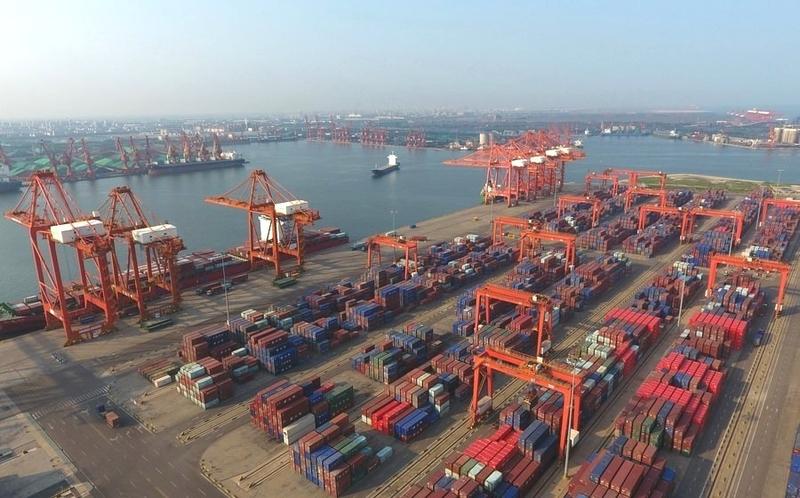 This aerial photo taken on July 14, 2020 shows the container terminal of Jingtang Port district under Tangshan Port in Tangshan, North China's Hebei province. (PHOTO / XINHUA)
This aerial photo taken on July 14, 2020 shows the container terminal of Jingtang Port district under Tangshan Port in Tangshan, North China's Hebei province. (PHOTO / XINHUA)
The Regional Comprehensive Economic Partnership agreement will be a strong growth driver for the shipping industry, logistics firms and major ports, industry experts said.
Wang Jingtian, an analyst specializing in transportation with China Galaxy Securities, said the 15 RCEP countries have a combined population of 2.27 billion, GDP of US$26 trillion and exports of nearly US$5.2 trillion. Equivalent to about one-third of the global economy, the massive economic scale of the RCEP will help China as it embarks on a dual-circulation development pattern, he said
Participating countries of the RCEP are the 10 member states of the Association of Southeast Asian Nations, China, Japan, South Korea, Australia and New Zealand. They account for around 30 percent of the global population, global gross domestic product and global trade.
Zhang Jun, a transportation analyst from Guosheng Securities, said that more than 90 percent of the China's imports and exports are handled by the shipping sector, and the significant increase in trade between China and other RCEP members will stimulate Chinese shipbuilding, shipping industries, as well as major Chinese ports whose main business is international cargo.
Shen Xiaofeng, an analyst who specializes in the transportation sector at Huatai Securities, expects the maritime transportation sector to directly benefit from the rising cargo volume under the RCEP agreement.
"We expect the RCEP to represent a new growth wave for ports and the shipping sector as a whole," said Shen.
According to Shen, coastal ports in China saw a compound annual growth rate of 20 percent between 2001 and 2007, and the rate slowed down to about 7 percent between 2010 and 2016 after the 2008 global financial crisis.
ALSO READ: RCEP will pave way to shared future
The RCEP will make the Asian supply chain more interconnected and enable efficient product sales, said Eric Lin, managing director and head of research at UBS Securities Co Ltd.
Chen Zhuo, a senior analyst with China Merchants Securities, said the RCEP has bucked the anti-globalization trend of the past few years and is the latest effort in restoring global free trade.
Wang Jingtian, an analyst specializing in transportation with China Galaxy Securities, said the 15 RCEP countries have a combined population of 2.27 billion, GDP of US$26 trillion and exports of nearly US$5.2 trillion. Equivalent to about one-third of the global economy, the massive economic scale of the RCEP will help China as it embarks on a dual-circulation development pattern, he said.
Since the RCEP covers various industries like cargo, services and investment, it will greatly enhance the overall free trade efforts within the region, said Wang.
READ MORE: RCEP pact 'victory of multilateralism, free trade'
The RCEP not only bodes well for the shipping sector, but also gives a boost to a freer flow of people traveling across the region, said Chen from China Merchants Securities.
"The RCEP will have a spillover effect for Chinese manufacturers in the ASEAN. It will bring about more passengers for airlines (Spring Airlines for example) with a strong network and business to destinations in East Asia, Southeast Asia, Australia and New Zealand," he said.
READ MORE: Ocean shipping shrinks as pandemic pummels retailers


